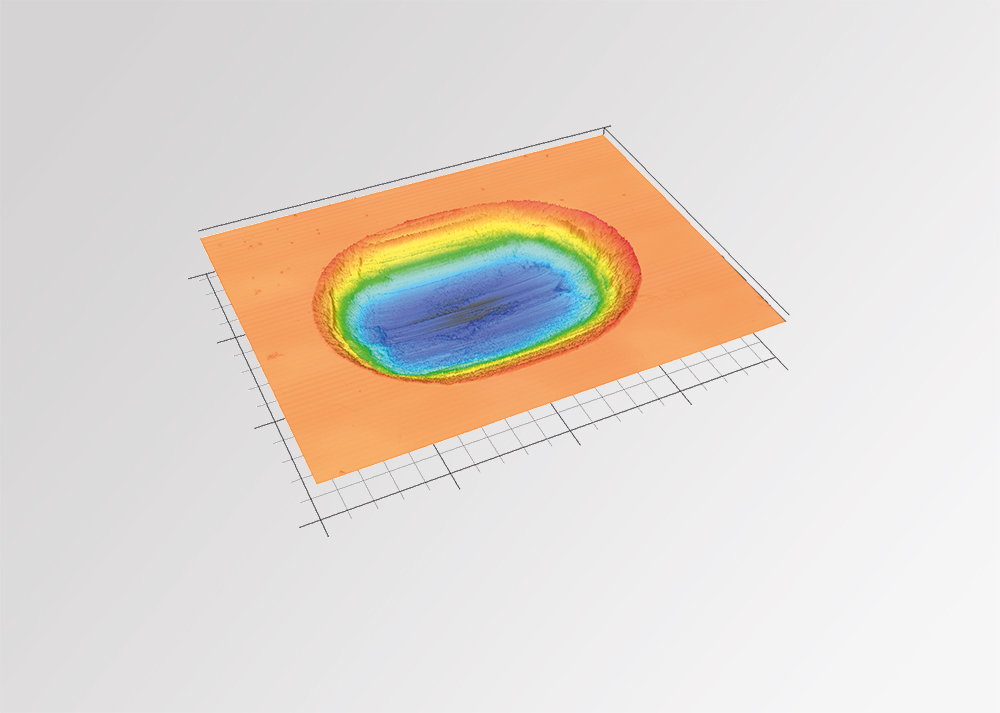
Failure analysis | Corrosion and tribological testing

Application-specific selection of materials for ceramic components and behavioral assessment (including failure analysis) of ceramic materials and components in use are complex processes requiring solid knowledge of materials, skill in materials preparation, and mastery of the relevant analysis methods.
Failure analysis
In many sectors of the economy, there is an urgent need for low-cost production components with extended service lives in both abrasive tribological and corrosive conditions. The result of this is greater loading of existing materials and components in various applications. Apart from development of high-performance materials, materials selection based on specific loading conditions is required for avoidance of premature component failure. However, this requires precise knowledge about the behavior of the materials under mechanical, thermal, corrosive, and tribological loads. This knowledge can be generated through sophisticated measurement and analysis methods that can reproduce the extreme loading conditions. Alternatively, reliable failure analysis and assessment can be performed to facilitate determination of the root cause of failure and materials qualification.
Failure analysis entails thorough fractographic investigation of the fracture surfaces as well as localized or more extensive changes in the microstructure and the properties under application conditions. Service life-limiting processes can be modeled through simulation of mechanical, thermal, corrosive, or abrasive tribological loads by means of adapted test methods or numerical simulations. This then enables the selection of materials to be qualified or the materials to be optimized for the particular application in collaboration with partners from industry.
To be able to model and understand service life-limiting processes, it is often necessary to have precise knowledge of the corrosion stability and the wear behavior. Fraunhofer IKTS has far-reaching experience and methods for investigating corrosion and wear behavior (see Tables 1 and 2). Both standard test methods and modified, load-adapted test benches are available. Optimal strategies for quality assurance of products can be developed with this know-how in combination with state-of-the-art non-destructive analysis possibilities.
The institute’s know-how and “know-why” cover ceramic materials, hardmetals, and cermets. Solid results interpretation is possible thanks to the close meshing with the areas of materials and component development. Fraunhofer IKTS possesses a unique body of knowledge on ceramic materials, components, and systems stemming from a long history of development of ceramic materials, processes, and products. Customers and project partners benefit from this experience in materials selection and component design as well as in failure analysis.
Corrosion and tribological testing
Standard corrosion methods
| Method | Temperature | Media |
| Corrosion by liquids under normal pressure | To boiling point | Acids, bases, salt solutions |
| Electrochemical corrosion in various electrolytes | Close to RT | Acids, bases, salt solutions |
| Hydrothermal corrosion | < 250 °C | Pressure < 200 bar, water, salt solutions, diluted acids, water vapor |
| Gas corrosion | < 2000 °C | Gas with various compositions, flowing |
| Hot gas/burner test bench | < 1600 °C | Flow rate v = 100 m/s, pressure 1 atm, up to 30 % water vapor |
| Salt spray test | 35 °C | As per DIN EN ISO 9227 (NSS) |
| Humid heat | 0 °C to 100 °C; 10 % to 100 % relative humidity |
Constant climate, cyclic tests also possible |
| Tracking and erosion resistance | Normal climatic conditions |
Normal and harsher conditions according to DIN EN 60112 and DIN IEC 60587 |
| Arc resistance | Normal climatic conditions |
Low voltage and high current, high voltage and low current |
Tribological testing methods
| Method | Conditions | Result |
| Oscillation and rotational measurement with various pairs (SRV linear-oscillation test machine) | Controlled climatic conditions T < 800 °C force < 200 N | Frictional force, twisting moment, coefficient of friction, wear rate |
| Rolling-sliding friction (rolling friction with slip) | Dry running, various media (force to 2000 N) |
Frictional force, wear rate, coefficient of friction |
| Abrasive wear according to ASTM G65 (TE 65 multiplex sand/ wheel abrasion tester) |
Frictional force < 200 N |
Specific abrasive wear (mass change, volume change) |
Services offered
- Consulting on application-based materials selection and component design
- Failure and failure mechanism analysis
- Determination of corrosion behavior and corrosion mechanisms occurring in ceramic materials
- Determination of wear mechanisms



